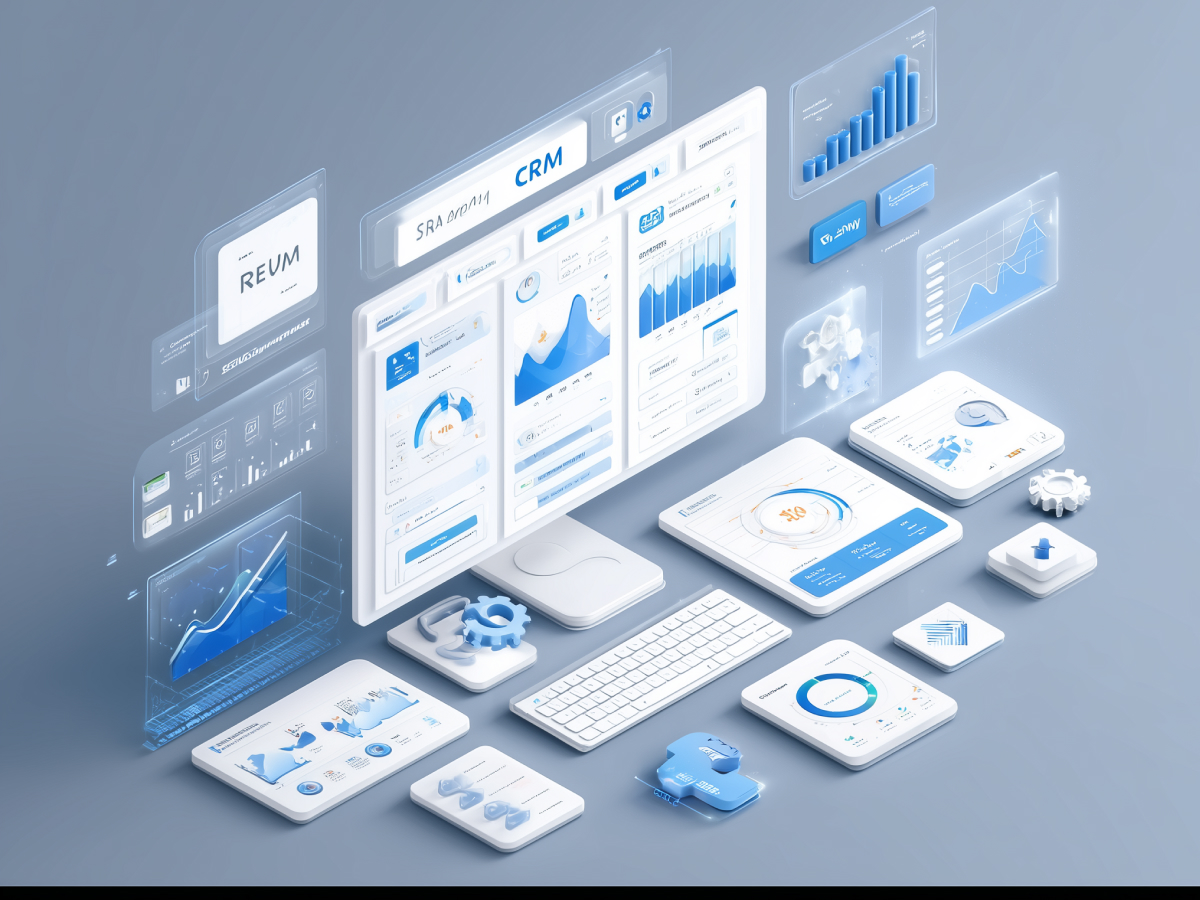AI supports new tech professionals in building foundational skills and preparing for interviews
If you’re hiring early-career talent, or you are early-career talent, the foundational phase determines future velocity. The good news: AI just made that learning curve less of an obstacle. With the right tools, new professionals aren’t starting from zero, they’re starting with assistance.
Tools like Perplexity AI allow users to break down complex concepts through iterative questioning. Questions like “explain it like I’m five” are no longer lazy, they’re effective. Instead of wasting time on poorly indexed search results, entry-level engineers or analysts can focus on grasping core ideas directly, quickly, and interactively. This is knowledge acquisition with purpose, not trial and error.
Once technical understanding is there, clear communication becomes the next priority. Strong technical thinking is only valuable if it’s intelligible. Writing-focused AI tools, Grammarly and its enterprise-grade contemporaries, are coaching newcomers on how to sound more precise, more concise, and more credible. That’s changes how individuals are perceived, both in interviews and on the job.
When preparing for interviews, candidates can input their resumes and job descriptions into AI tools to generate potential questions and refine answers. Candidates get tailored feedback based specifically on the roles they’re after. The catch? Authenticity still matters. AI doesn’t know your story. The candidate who blindly copies a generated response loses the only advantage they have: personal credibility. That’s why the support AI offers still requires human review and personalization.
For high-value training, courses like “Generative AI for IT Pros” and “Prompt Engineering with Generative AI” by Pluralsight are already shaping a smarter, more productive junior workforce. These professionals are more AI-literate. That pay-off compounds.
Executives focused on reducing onboarding time and building fast-moving teams should align early-career development investments with these tools.
AI accelerates skill development for mid-level professionals while boosting visibility and mentorship
For mid-level professionals, time becomes the bottleneck. These are your engineers, product leads, analysts, and managers who have competencies, but not capacity. They’re the backbone of output, and the tipping point for burnout. If you’re running lean teams, that’s a risk you want resolved. AI helps here without compromise.
GitHub Copilot and similar tools write faster and cleaner code. That’s baseline. But the true advantage is that these platforms also suggest optimizations, anticipate design patterns, and reduce task repetition. For the individual, less time buried in syntax. For the org, more time spent on strategic initiatives, customer features, and scaling architecture.
Anyone producing documentation or public-facing content knows tone matters. You can’t lead with detail unless people are listening. Grammar-focused AI and tone-aware editing tools are now tuned to help professionals find their voice. Less friction between subject-matter expertise and communication quality means better documents, better onboarding, and stronger personal branding.
Mentorship becomes scalable, too. Assume you’re mentoring a junior developer with mixed project exposure. You can prompt AI with a real backlog and generate tailored learning paths. You can break down features with clarity matched to the learner’s level.
Forget the idea that technical growth is enough. Soft skills scale visibility. Mid-level professionals climbing into leadership trajectories benefit directly from courses like “Using Feedback to Drive Performance” or “Essential Lessons for First-time Managers.” When paired with AI-enhanced task management, communication support, and technical coaching, these tools round out their capabilities.
Executives and department heads who want to avoid the cost of replacement hires, slow progress, or misaligned teams should note this: when high-potential professionals are supported with both technology and training, that potential compounds fast.
AI facilitates career pivots by mapping out skill transitions and creating tailored learning paths
Career pivots are becoming routine in tech. Roles evolve fast, stacks shift constantly, and individual motivation isn’t static. Whether you’re shifting due to burnout, opportunity, or curiosity, AI provides structured support that’s both fast and personalized.
If you’re moving from QA to DevOps, or IT support to cybersecurity, the skill gaps matter, but they’re knowable. AI tools can map those transitions clearly by comparing the skills on your current resume to the demands of your target role. The result isn’t a generic learning recommendation, it’s a customized path based on real-world overlaps and gaps. That means less guesswork and shorter time-to-competence.
Resume-building platforms like Kickresume now integrate AI to optimize resumes for digital applicant tracking systems. These systems reject massive numbers of applicants based on formatting, keyword matching, or vague phrasing. AI-generated guidance adapts your resume to fit those filters precisely. It doesn’t guarantee interviews, but it significantly improves your ability to get seen by a recruiter or automated screener.
Even better, AI lets professionals test transitions without committing to a formal job switch. You can simulate a pivot by asking an AI assistant to design a portfolio project aligned to a new role. You can compare job listings for required competencies and immediately begin a self-paced upskilling process. Add structured assessments, like skills IQ scores, and you get measurable feedback to steer your development.
This is critical for companies and leaders managing workforce flexibility. Talent mobility inside your teams improves retention more than compensation increases. People want roles that match their growth, not titles that trap them. Equipping them with AI tools that make pivoting viable builds agility at scale.
That said, AI isn’t calibrated for local context, niche requirements, or current hiring manager priorities. Decision-makers can’t rely on AI as a complete substitute for industry dialogue or trend awareness. Professionals still need to confirm what’s current by analyzing job postings, following communities, and, in the best case, talking directly to actual peers doing the work.
AI gives directional clarity and momentum. Leadership gives it relevance.
AI empowers managers in communicating effectively, strategic planning, and team mentorship
Once you’re leading a team, individual output stops being the primary metric. What matters is how fast, how well, and how consistently your team delivers. At this level, AI becomes a force multiplier for visibility, alignment, and trust.
Start with project analysis. Managers can use AI to synthesize team retrospectives or extract patterns from ongoing performance indicators. It’s about extracting insight from scattered tools and feedback loops. You can then identify project risks early, which lets you act before they burn engineering time or damage momentum.
Communication improves, too. When executives ask for updates, or when your team needs direction, clarity is non-negotiable. AI can take your raw notes, bullet points, or talking prompts and transform them into presentations or summaries optimized for non-technical audiences. This matters when you’re defending budget, asking for headcount, or aligning product and engineering on scope.
At the team level, AI is a planning assistant. Suppose you have a mixed-experience group tackling a high-impact delivery. AI prompt engineering allows you to craft scope breakdowns, development sequences, and targeted milestones tailored to each contributor. Junior developers know what to tackle. Senior staff focus where impact is highest. Everyone understands the expected path.
This is what makes strategic leadership scalable. Courses like “5 Ways to Build Executive Presence” and “Leadership Skills for the Future” offer frameworks around influence, positioning, and communication. When combined with AI-powered analysis and rich scenario simulation, including salary negotiations or performance feedback, you get repeatable preparation and aligned execution.
One warning: AI doesn’t replace emotional intelligence. It can format your points, but it cannot understand team dynamics, morale shifts, or political undercurrents. Leaders who over-rely on AI risk sounding mechanical and disconnected. That’s a loss of influence, not a gain in efficiency.
High-performing managers use AI for what it’s best at, speed and synthesis, while anchoring leadership in intention, presence, and judgment. That’s the model worth scaling.
AI aids senior professionals in maintaining technical proficiency and preserving institutional knowledge
At the senior stage of a tech career, value shifts from execution to experience. You’re not expected to write every line of code or solve every technical issue, but your insight still drives product quality, architectural decisions, and team development. That’s where AI contributes by enhancing clarity, preserving accrued knowledge, and reducing pressure to “keep up” manually.
AI tools are now efficient at surfacing relevant developments in stacks, frameworks, or protocols, scanning release notes, summarizing changelogs, and even forecasting industry shifts. This allows senior professionals to stay technically fluent without devoting excess time to manual monitoring or deep-diving redundant updates.
There’s also the matter of operational continuity. Years of contributions often exist in memory or scattered documentation. AI can be used to systematize that knowledge. Feeding old project reports, codebases, or team notes into AI-driven content tools allows the creation of onboarding guides, internal wikis, or SOPs in the senior professional’s voice. This is clarity at scale, with knowledge transfer that doesn’t require endless meetings or micromanagement.
Mentorship gets a productivity boost as well. A prompt such as “How can I turn my past projects into learning modules for junior engineers?” creates structured starting points. These outputs serve as technical references and personal commentary, giving juniors not just instruction but context. That difference changes adoption and engagement.
For executives managing risk around attrition or retirement, this approach protects key intellectual capital. It’s about capturing the principles and decision logic behind previous wins or failures, something that rarely lives inside traditional HR documents or static documentation. AI-assisted knowledge packaging ensures organizations are less dependent on direct availability and more resilient overall.
One point leaders can’t dismiss: AI will not always validate legacy knowledge. If a senior engineer references a pre-cloud architecture method, there’s a chance AI tools deprioritize or miss its relevance. That doesn’t mean the knowledge is obsolete. Experience delivers nuance. AI delivers structure. When used correctly, the combination gives teams better decisions and faster onboarding.
AI assists professionals transitioning to retirement by shaping flexible, legacy-focused post-career roles
Retirement in tech rarely means full disengagement. For many, it’s an opportunity to refocus energy, less on delivery pressure, more on influence. AI helps senior professionals map out what that looks like in practical terms. Whether someone shifts to advisory work, part-time consulting, or thought leadership, the transition is less complicated with the right digital tools.
Professionals with decades of experience can use AI to consolidate relevant work history into case studies, public speaking briefs, or portfolio assets. Asking AI to assemble past accomplishments into a coherent narrative saves hours. It also removes bias in presentation, helping users articulate their impact without downplaying or overexplaining their contributions.
Crafting a digital presence, whether that’s a personal site, blog, or GitHub profile, is now something that AI can scaffold efficiently. With minimal technical input, users can prompt AI to draft introductory copy, list capabilities, or refine positioning relevant to new advisory markets. This lets senior individuals pivot to fractional roles or project-based assignments that are aligned with what they already do best.
Contributions to developer communities and open-source projects don’t require onboarding mechanics anymore either. AI tools help summarize documentation, review GitHub conversations, and create maintainable updates with low time investment, making community participation far more viable for someone winding down from full-time work.
Executives should encourage this. When former senior staff remain connected, they support organizational learning loops, serve as advisors during moments of transition, and reinforce employer brand credibility across networks. AI simply facilitates the connection by reducing logistical and content-creation friction.
However, there’s a limit to automation. AI can support content, structure projects, and frame narratives, but it can’t replace voice. In retirement-phase work, authenticity isn’t a preference, it’s the currency. Prospective partners, mentees, or audience members want to engage with real opinions. AI can clean up language. It can’t invent credibility.
The strategic opportunity is clear: AI allows experienced professionals to stay relevant, stay influential, and operate at their own pace, while organizations benefit from institutional continuity and enduring thought leadership.
Effective use of AI throughout a tech career requires a balanced, mindful approach that marries efficiency with authenticity
Across roles, teams, and career stages, the use of AI scales, but so do its implications. AI tools are fast, consistent, and capable of producing large volumes of output. The problem begins when professionals or organizations prioritize volume over value.
Using AI correctly means treating it as a draft assistant, processor, and idea accelerator, not as a final voice. Whether someone is building presentations, code snippets, feature specs, or analyst summaries, the initial output needs to be reviewed, refined, and, most importantly, aligned with the professional’s or brand’s distinct point of view.
For individual contributors, this means checking tone, testing accuracy, and filtering out irrelevant or generic suggestions. For managers and executives, it’s about ensuring that automation doesn’t strip away context, authenticity, or leadership perspective. Decision communication, team engagement, and investor updates all benefit from AI, but only if the person behind it takes ownership of the final message.
There’s also a thinking discipline required. AI may short-circuit certain mechanical steps of problem-solving and content production, but it cannot replicate prioritization, intention, or ethical reasoning. These still belong to the human operator, and in the context of executive-level decisions or user impact, those judgments carry consequences.
C-suite leaders should approach AI implementation as a learning interface. The right policy is co-creation: structured human oversight with iterative AI assistance. When expectations are set at the organizational level, proof it, polish it, personalize it, teams understand quality isn’t sacrificed for convenience.
This applies at every level. Entry-level engineers should be trained on how to critique AI suggestions. Mid-level leaders should use AI to accelerate delivery, not abdicate responsibility. Senior professionals should teach AI how to reflect their experience, not defer to its outputs. And retiring professionals should use AI to support, not rewrite, their voice.
Strategically, this is straightforward. AI extends capability, it doesn’t replace it. Companies that treat AI as a collaborator, not a crutch, will outperform in creativity, talent development, and trust. The tools evolve fast. The principles behind exceptional work do not.
In conclusion
AI isn’t here to replace talent, it’s here to multiply it. For decision-makers, that means rethinking how you structure growth, how you manage transitions, and how you retain critical knowledge at every level. The impact compounds when you stop treating AI as a peripheral tool and start using it to enhance strategic capability.
From onboarding junior talent faster, to enabling smoother role changes and supporting long-term legacy planning, AI gives you the optionality most orgs are missing. It’s not about efficiency for the sake of output, it’s about alignment, adaptability, and long-term resilience.
What matters now is how you roll this into your culture. Handle AI like a partner. Coach teams to use it with precision. Measure outcomes with clarity. And most of all, prioritize human judgment as the final layer, because that’s the part you still can’t automate.
The organizations that scale with AI while staying grounded in thoughtful leadership will move faster, retain better, and outperform. Everything else becomes maintenance.





